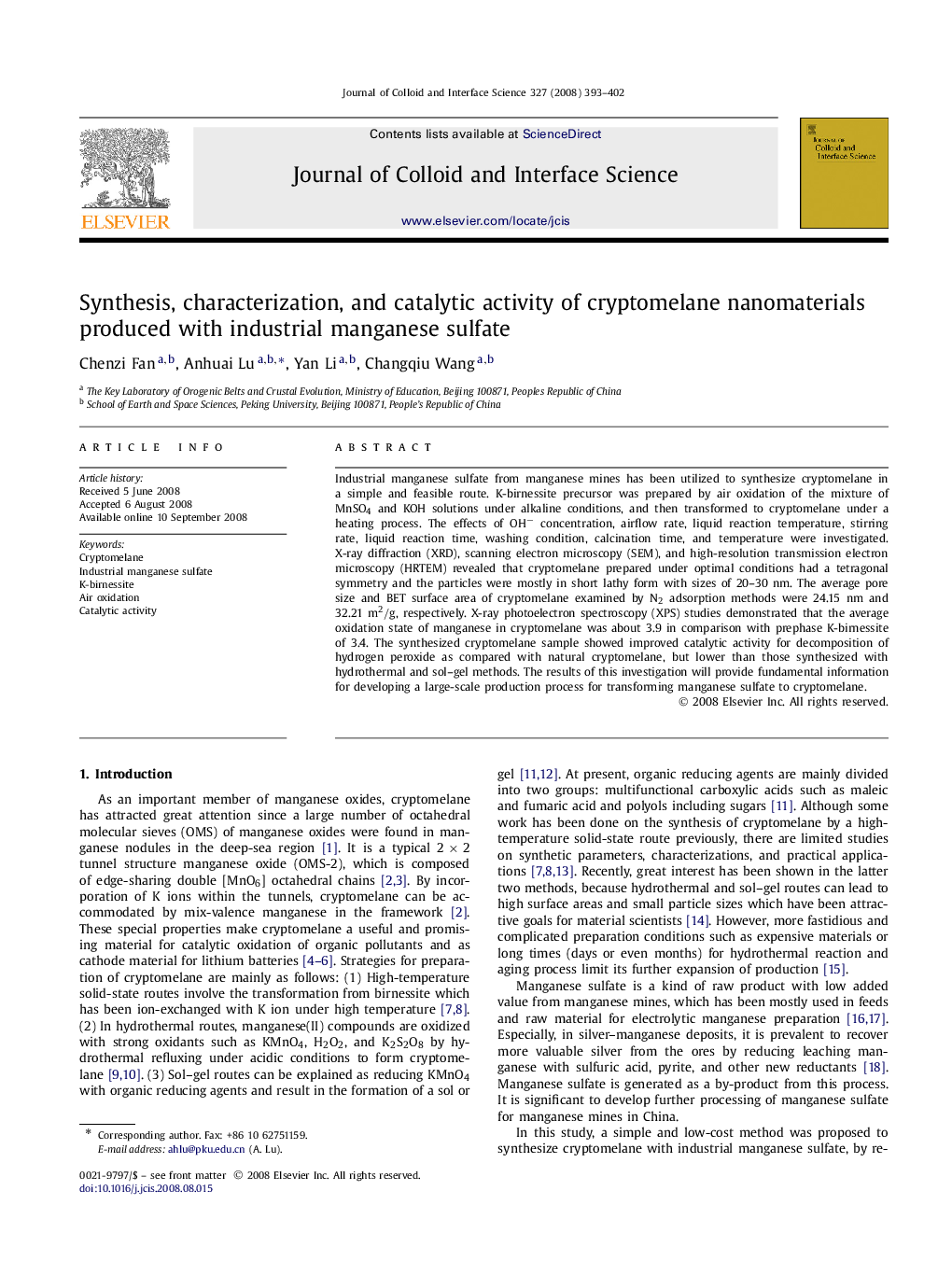| Article ID | Journal | Published Year | Pages | File Type |
|---|---|---|---|---|
| 610744 | Journal of Colloid and Interface Science | 2008 | 10 Pages |
Industrial manganese sulfate from manganese mines has been utilized to synthesize cryptomelane in a simple and feasible route. K-birnessite precursor was prepared by air oxidation of the mixture of MnSO4 and KOH solutions under alkaline conditions, and then transformed to cryptomelane under a heating process. The effects of OH− concentration, airflow rate, liquid reaction temperature, stirring rate, liquid reaction time, washing condition, calcination time, and temperature were investigated. X-ray diffraction (XRD), scanning electron microscopy (SEM), and high-resolution transmission electron microscopy (HRTEM) revealed that cryptomelane prepared under optimal conditions had a tetragonal symmetry and the particles were mostly in short lathy form with sizes of 20–30 nm. The average pore size and BET surface area of cryptomelane examined by N2 adsorption methods were 24.15 nm and 32.21 m2/g, respectively. X-ray photoelectron spectroscopy (XPS) studies demonstrated that the average oxidation state of manganese in cryptomelane was about 3.9 in comparison with prephase K-birnessite of 3.4. The synthesized cryptomelane sample showed improved catalytic activity for decomposition of hydrogen peroxide as compared with natural cryptomelane, but lower than those synthesized with hydrothermal and sol–gel methods. The results of this investigation will provide fundamental information for developing a large-scale production process for transforming manganese sulfate to cryptomelane.
Graphical abstractSynthetic cryptomelane with industrial manganese sulfate under optimal experimental conditions shows a slit-shaped mesopore character with average pore size of 24.15 nm.Figure optionsDownload full-size imageDownload as PowerPoint slide
